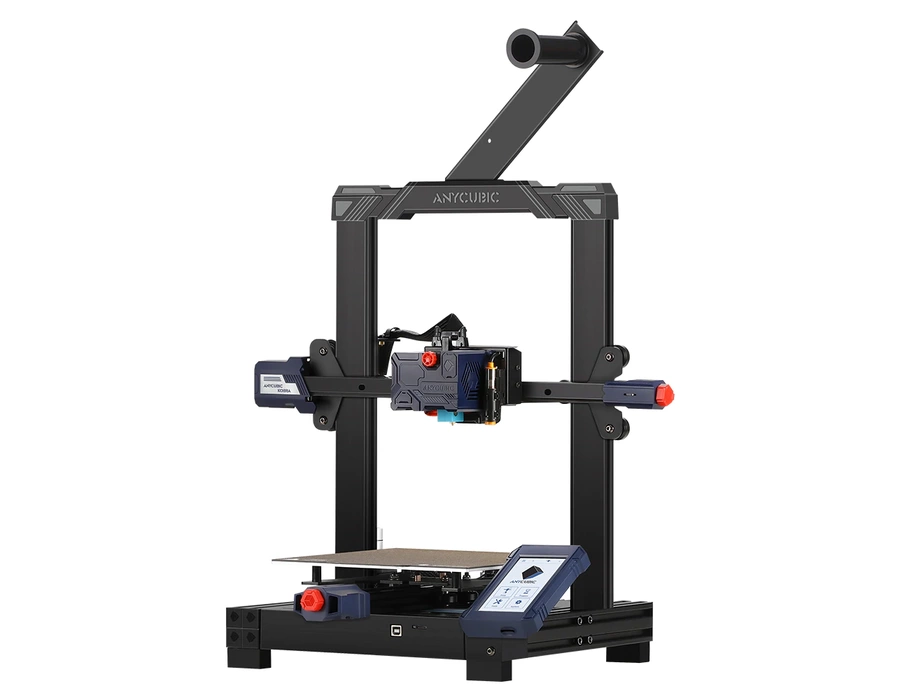Compare A3V3 vs Kobra
Comparison between the best 3D printers
Choose the best 3D printer at the best price. The cheapest 3D printers are here.
Buy a 3D printer here with 3D Fila.
 |
 |
|
| Model | A3V3 |
Kobra |
| Printing Material | Filament | Filament |
| Buy Filament for GTMax A3V3 | Buy Filament forAnycubic Kobra | |
| Estimated price | $1210,00 | $259,00 |
| Manufacturer | GTMax | Anycubic |
| Release Year | 2022 | 2022 |
| Print Volume [mm] | 320x320x340 | 220x220x250 |
| Printer Size [mm] | 640x580x630 | 486x430x486 |
| Weight [kg] | 7 | |
| Power Loss Recovery | YES | YES |
| Enclosed printer | YES | NO |
| Bed Leveling | Automatic | Automatic |
| Filament End Sensor | YES | NO |
| Bed type | Heated | Heated |
| Power supply system | Bowden | Direct Drive |
| Standard nozzle | 0,4 | 0,4 |
| Maximum Nozzle Temperature [°C] | 295 | 260 |
| Maximum Bed Temperature [°C] | 110 | |
| Maximum printing speed [mm/s] | 180 | 180 |
| Filament holder | YES | YES |
| Camera for supervision | NO | NO |
| Recommended filaments | PLA, PETG | PLA, PETG, Tritan, Flex, ABS |
| Recommended slicers | Cura, Simplify, Slic3r, IdeaMaker e outros | Cura, Simplify, Slic3r, IdeaMaker |
| Maximum Resolution [mm] | 0,05 | 0,1 |
| Processor | ||
| Display | Display touchscreen 3,2'' | Display touchscreen 4,3'' |
| Power Supply | 110/220V / 400W | |
| Connectivity | SD / USB / Wi-Fi | SD / USB |
| Operating systems | Windows, Mac, Linux | Windows, Mac, Linux |
| Date of registration in the system | 2022-11-12 | 2022-11-09 |
| Release date | 2022 | 2022 |
| Extra features | The PROCORE A3v3 is an advanced 3D printer with a robust structure and Wi-Fi connectivity. It stands out for its aluminum extruder with Dual Gear system for precision and traction, and a movement system with machined parts. It includes a 3.2-inch LCD Touchscreen Display, Wi-Fi remote control and a Core XY movement system for greater speed and precision. It offers an Allmetal Volcano hotend that reaches up to 295°C, is compatible with various filaments and has an energy saving system, reducing consumption by up to 75%. | The Anycubic Kobra features automatic bed leveling and a direct extruder for easy filament handling. The print bed is coated with PEI on a flexible steel plate, improving adhesion and making prints easier to remove. The printer features sensorless homing and is designed to be easily disassembled for easy maintenance and customization. |
| Support for multiple colors and materials (AMS and CFS) | NO | NO |
Notes * |
||
| Cost-benefit | 6 / 10 | 7 / 10 |
| Hardware | 3 / 10 | 1.8 / 10 |
| Tela | . | . |
| Print volume | 4 / 10 | 3 / 10 |
| Performance | 1 / 10 | 1 / 10 |
Conclusion |
| In comparing the GTMax A3V3 and the Anycubic Kobra 3D printers, several key factors highlight their strengths and weaknesses in relation to their pricing. The GTMax A3V3 stands out with a larger print volume and an enclosed design, which can enhance print quality by maintaining a stable temperature environment—especially when using materials that are prone to warping. This printer is equipped with advanced features such as an automatic filament end sensor, higher maximum nozzle temperatures, and supports a broader range of filaments. Its robust structure and dual-gear aluminum extruder contribute to its overall precision, making it suitable for users who require reliability and versatility for extensive projects. In contrast, the Anycubic Kobra offers a more accessible price point while still providing essential features like automatic bed leveling and a direct drive system. Although it has a smaller print volume and lacks an enclosed build, which could affect print stability for certain materials, its design facilitates easy maintenance and customization. The Kobra’s heated bed is coated for improved print adhesion, appealing to beginners and hobbyists looking for a straightforward 3D printing experience. In conclusion, if budget constraints are paramount and you seek ease of use, the Anycubic Kobra presents an excellent option. However, for those willing to invest more for enhanced capabilities, larger print volumes, and a feature-rich experience, the GTMax A3V3 offers greater performance and versatility. Ultimately, the choice should align with the user's specific needs, experience level, and intended applications, balancing between cost and the desired functionality. |

